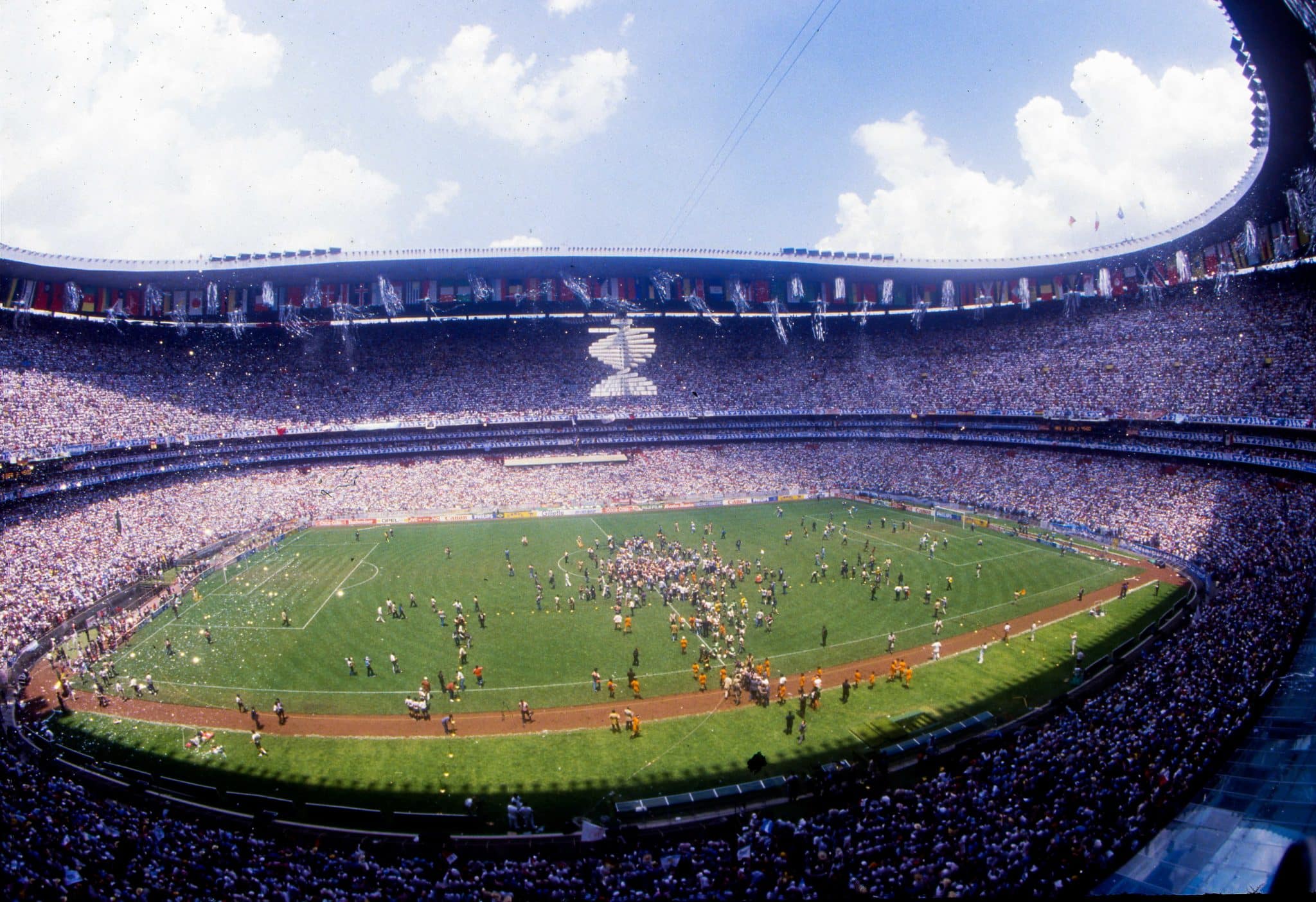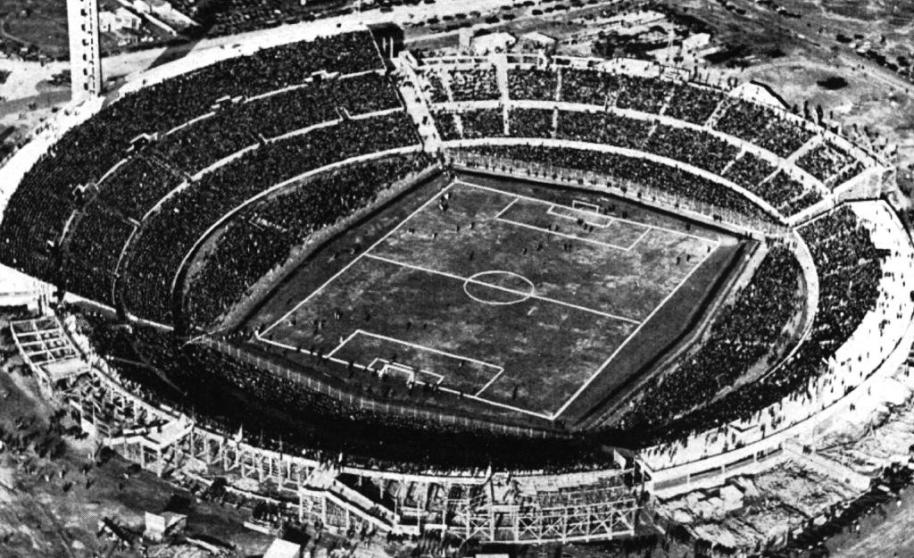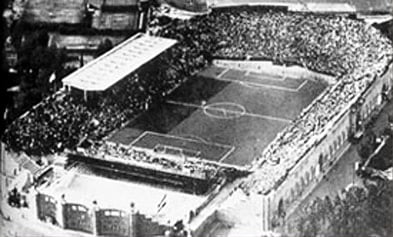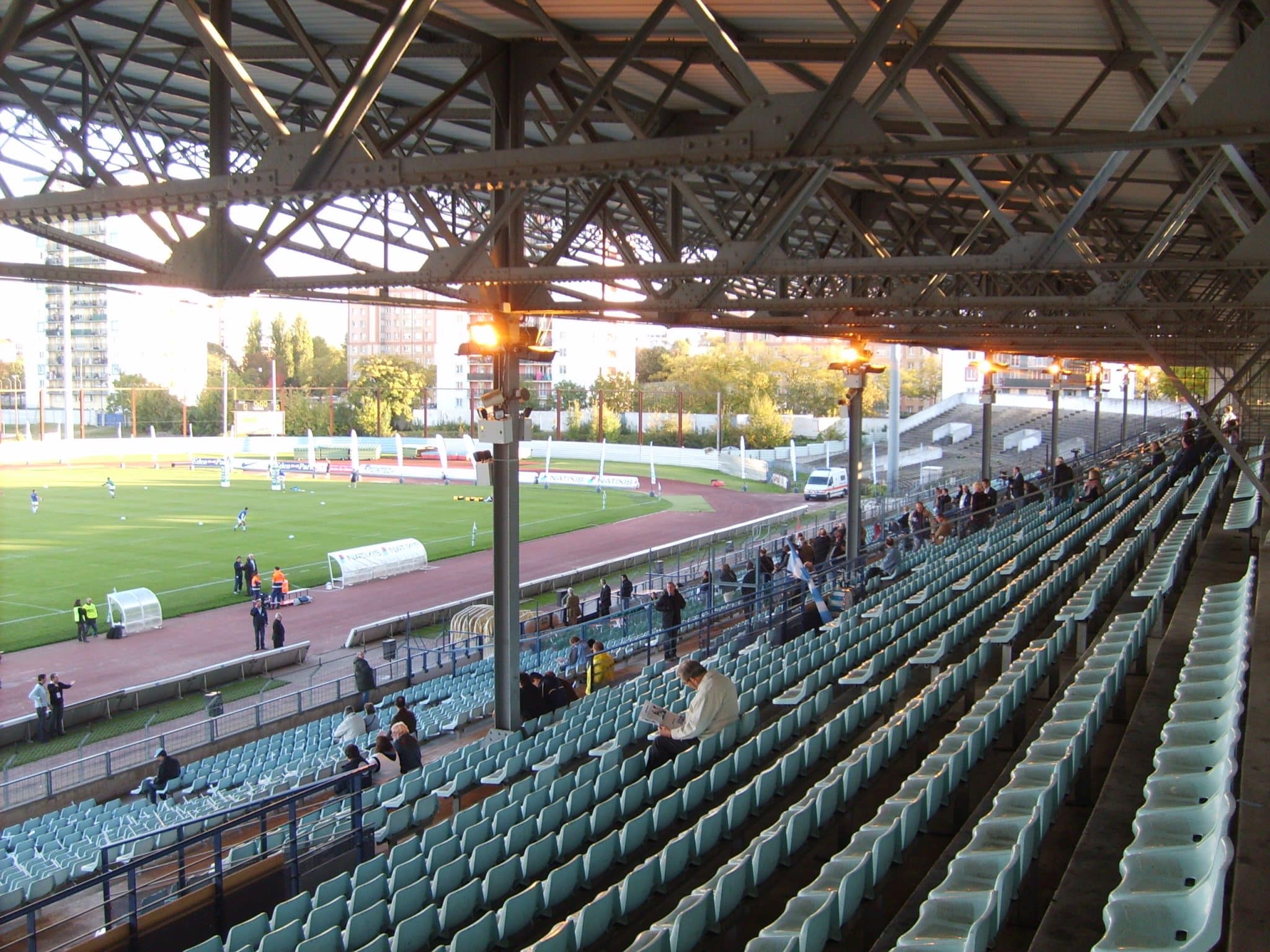
The World Cup final is probably the world's most anticipated sporting event, with a record viewership of 1.5 billion people watching the 2022 FIFA World Cup final globally.
The quadrennial competition will next be hosted by Canada, Mexico and the USA in 2026, before six countries joint-host the tournament four years on. The draw for the group stage of the 2026 World Cup has been made, with the final set to be played at MetLife Stadium at the Meadowlands Sports Complex in East Rutherford, New Jersey, near New York City.
Below is a list of all the World Cup final stadiums from 1930 up to 2030.
Full list of World Cup final stadiums, 1930-2022
1930: Estadio Centenario, Montevideo, Uruguay
1934: Stadio Nazionale PNF, Rome, Italy
1938: Stade Olympique de Colombes, Paris, France
1950: Estadio do Maracana, Rio de Janeiro
1954: Wankdorf Stadium, Bern, Switzerland
1958: Rasunda Stadium, Stockholm, Sweden
1962: Estadio Nacional, Santiago, Chile
1966: Wembley Stadium, London, England
1970: Estadio Azteca, Mexico City, Mexico
1974: Olympiastadion, Munich, West Germany
1978: Estadio Monumental, Buenos Aires, Argentina
1982: Santiago Bernabeu, Madrid, Spain
1986: Estadio Azteca, Mexico City, Mexico
1990: Stadio Olimpico, Rome, Italy
1994: Rose Bowl, Pasadena, Los Angeles, California, USA
1998: Stade de France, Saint Denis, Paris
2002: International Stadium, Yokohama, Japan
2006: Olympiastadion, Berlin, Germany
2010: Soccer City, Johannesburg, South Africa
2014: Estadio do Maracana, Rio de Janeiro, Brazil
2018: Luzhniki Stadium, Moscow, Russia
2022: Lusail Iconic Stadium, Lusail, Qatar
1930: Estadio Centenario, Montevideo, Uruguay

The first-ever World Cup final was held at the Estadio Centenario, Montevideo, Uruguay, in front of a capacity crowd of 68,346 on 30 July 1930. The game was contested between two South American nations, Uruguay and Argentina, with the hosts winning 4-2 and lifting the first-ever World Cup.
The stadium was used by the Uruguayan club Penarol from 1933 until 2016, but is now only used by the Uruguayan national team. It went under reconstruction in 2021 and will be involved in the hosting of the 2030 World Cup final.
1934: Stadio Nazionale PNF, Rome, Italy

The Stadio Nazionale PNF in Rome, Italy hosted the 1934 World Cup final when Italy met Czechoslovakia in front of 55,000 spectators. Like four years prior in Uruguay, the home fans were not left disappointed as Italy lifted their first World Cup trophy, beating Czechoslovakia 2-1 in the final on 10 June.
The stadium’s name translated into English is the National Stadium of the National Fascist Party. It was closed down in 1953 and replaced by the Stadio Flaminio, a stadium mainly used for rugby. It was used by Italian football club Atletico Roma FC but they dissolved in 2011.
1938: Stade Olympique de Colombes, Paris, France

The Stade Olympique de Colombes hosted the 1938 final in Paris, France in the first final that did not include the host nation. Italy played Hungary in June 1938, with the Italians winning 4-2 and lifting their second World Cup. The game was attended by 45,000.
The stadium has only a capacity of around 14,000 these days and is used by the Racing Club de France Football.
1950: Maracanã, Rio de Janeiro

1950 saw Brazil host their first World Cup, with the Maracanã in Rio de Janeiro hosting the final between Brazil and Uruguay. Unfortunately for the hosts, they lost 2-1 to their South American neighbours in front of a record crowd of 173,000 people.
The Maracanã is now home to four Brazilian football clubs: Botafogo FR, CR Flamengo, Fluminense FC and CR Vasco da Gama.
1954: Wankdorf Stadium, Bern, Switzerland

West Germany beat Hungary 3-2 in the 1954 World Cup final, hosted at the Wankdorf Stadion in Bern, Switzerland. The Germans won their first-ever World Cup title in front of 62,500 people.
The Wankdorf Stadium was used by the Swiss football club BSC Young Boys until it was demolished in 2001. It's now rebuilt and regularly hosts UEFA Champions League matches.
1958: Råsunda Stadium, Stockholm, Sweden

Many will point to the 1958 World Cup final at the Råsunda Stadium in Stockholm, Sweden as the beginning of Brazil's dominance in the World Cup. There, beating host nation Sweden 5-2 in the final, they lifted their first trophy, in front of 49,737 people.
Pele scored two goals in the final to announce himself to the world of football. The rest, as they say, is history.
The stadium was demolished in 2013 after being the Swedish national football team's home ground for many years.
1962: Estadio Nacional, Santiago, Chile

It was Chile’s turn to host in 1962 and the Estadio Nacional acted as World Cup final host stadium. On 17 June, and with a crowd of 68,679 people, Brazil won their second World Cup, beating Czechoslovakia 3-1 in the final.
The stadium is now used by the Chilean football club Universidad de Chile and the Chilean National football team. It was infamously used as a detention centre back in the 1970s. It's one of several World Cup stadiums with a dark history.
1966: Wembley Stadium, London, England

The 1966 World Cup final stadium was Wembley where England achieved their only men's World Cup triumph. In front of 96,924 people, England defeated West Germany 4-2, with Geoff Hurst scoring the first-ever World Cup final hat-trick.
Wembley was later demolished and rebuilt and now has a capacity of 85,000, hosting all of England’s international football matches, as well as all domestic cup finals, such as the League Cup, FA Cup and FA Vase. The record Wembley attendance was set in an FA Cup final between Bolton Wanderers and West Ham United, when 126,047 crammed themselves in to see the 1923 FA Cup final, which is often referred to as the ‘White Horse’ final. Bolton won the game 2-0.
1970: Estadio Azteca, Mexico City, Mexico

Mexico first hosted the World Cup in 1970 with the magnificent Estadio Azteca in Mexico City acting as World Cup final host for the contest between Brazil and Italy. An incredible 107,412 watched the Brazilians win the game 4-1.
The Estadio Azteca will become the only stadium to have hosted World Cup games in three different tournaments when Mexico co-hosts the 2026 World Cup.
1974: Olympiastadion, Munich, West Germany

Constructed to represent the ideals of freedom in Munich as West Germany attempted to move on from the Third Reich, Munich's unique Olympiastadion hosted the 1974 World Cup final, as well as the 1972 Olympics. West Germany defeated the Netherlands 2-1 in front of a 75,200-crowd.
Home to both 1860 Munich and Bayern Munich until 2005, the stadium is now mostly used for athletics and concerts.
1978: Estadio Monumental, Buenos Aires, Argentina

Argentina's first World Cup triumph came in front of their own supporters, just like Uruguay, Italy and England. Buenos Aires' Estadio Monumental saw Argentina defeat the Netherlands 3-1 after extra-time in a heated affair in front of a hostile crowd of 71,483.
The Estadio Monumental is home to River Plate, Argentina’s record league winners, who have won it 38 times. The record attendance at the Estadio Monumental was a game between River Plate and Racing Club, in 1975, which attracted a crowd of 100,000. The stadium has recently been renovated and could involved in the 2030 World Cup.
1982: Santiago Bernabeu, Madrid, Spain

1982 saw the turn of Spain to host the World Cup and the Santiago Bernabeu hosted the final, but it wasn’t the Spanish who played in it. Instead, it was two other European nations: Italy and West Germany. Italy won the game 3-1 in front of a crowd of 90,000.
Home of Spanish giants Real Madrid, the record attendance at the Santiago Bernabeu was a game between Real Madrid and AC Milan in 1956 when a reported 129,600 watched two of European football’s heavyweights go head to head.
The Bernabeu has undergone a major renovation recently and will likely play a part in the 2030 World Cup.
1986: Estadio Azteca, Mexico City, Mexico
The second time the Estadio Azteca stadium hosted a World Cup final saw Argentina and West Germany compete for the global gong. Captained by Diego Maradona, the Argentinians won the game 3-2 in front of 114,600 spectators.
Up until 2010, this game produced the most yellow cards in a World Cup final.
1990: Stadio Olimpico, Rome, Italy

The second time Italy got to host the World Cup was in 1990, and the Stadio Olimpico was chosen to host the final. The Italians didn’t make it to the final, however, and it was a repeat of four years previously, with Argentina playing West Germany. This time, in front of 73,603, the Germans got their revenge and won the game 1-0.
The Stadio Olimpico is currently shared by the two clubs from the Italian capital, Roma and Lazio.
1994: Rose Bowl, Pasadena, Los Angeles, California, USA

The turn of the USA to host the World Cup came in 1994 and the Rose Bowl in California was chosen as the host stadium for the final. A crowd of 94,194 people watched a 0-0 draw between Italy and Brazil play out and witnessed history as the first-ever World Cup final penalty shoot-out took place. Brazil won it 3-2 and lifted their fourth World Cup trophy.
The Rose Bowl is more commonly known for hosting the Rose Bowl Game, a post-season American football game. It is also home to the MLS side LA Galaxy.
1998: Stade de France, Saint Denis, Paris

France was given a second chance to host the World Cup in 1998 with the Stade de France given the final. The game was played between France and Brazil, with the host nation winning their first World Cup in front of 75,000 spectators.
The Stade de France was opened on 28 January 1998, just six months before it hosted the World Cup final.
2002: International Stadium, Yokohama, Japan

Two Asian countries combined to produce the first co-hosted World Cup in 2002. Japan and South Korea didn't disappoint and Japan had the honour of hosting the final at the International Stadium in Yokohama. Brazil won their fifth World Cup title by beating Germany in front of 69,029 spectators.
The International Stadium has been used on numerous occasions as the venue for the FIFA World Club Championship Final. It is also home to Yokohama F. Marinos.
2006: Olympiastadion, Berlin, Germany

Not to be confused with the first Olympiastadion that was used in Munich in 1974, this game was played in the Olympiastadion further north in Germany, in Berlin. The final was played between Italy and France and ended in a 1-1, with the Italians winning 5-3 in a penalty shoot-out. The game was most famous for Zinedine Zidane’s red card for headbutting Materazzi. A 69,000 crowd got to see that famous moment in football history that day.
The stadium is now home to Hertha Berlin, who currently play in the second division of German football. That still doesn’t stop them from filling the 74,649 capacity.
2010: Soccer City, Johannesburg, South Africa

The first time the World Cup was hosted on the continent of Africa, Johannesburg (South Africa) hosted the 2010 final. Spain lifted their first World Cup trophy in front of 84,490. The Iberian side defeated the Netherlands 1-0 in a fiery World Cup final trophy. Those attending Soccer City Stadium got to see 13 yellow cards and one red shown in what became the most cards produced in a World Cup final.
Soccer City is home to the South African football club Kaizer Chiefs. It also hosted the Africa Cup of Nations final in 2013, when Nigeria beat Burkina Faso in the final.
2014: Estadio do Maracana, Rio de Janeiro, Brazil
The Maracana hosted its second World Cup final in 2014, and Brazil weren't the victors again. Instead, it was their South American rivals Argentina who reached the final before being vanquished by their old foe Germany, losing 1-0 in front of 74,738. The Maracana is only one of two stadiums to host two World Cup finals.
2018: Luzhniki Stadium, Moscow, Russia

Moscow's Luzhniki Stadium host the 2010 World Cup final between France and Croatia. France won the game 4-2 to lift their second World Cup in front of 78,011 people.
The Luzhniki Stadium is home to the Russian First Division side Torpedo Moscow and was also the host stadium for the 200 Champions League final between Manchester United and Chelsea, which United won on penalties.
2022: Lusail Iconic Stadium, Lusail, Qatar

The first World Cup to be played in the winter months, the 2022 World Cup was hosted by the Middle East nation Qatar, with the final played at the Lusail Iconic Stadium. Argentina and France played out a 3-3 draw which sent the game to penalties. Argentina won 4-2 in the shoot-out to give Lionel Messi his first World Cup and Argentina’s third. 88,966 people saw the South Americans lift the trophy for the first time since 1986.
The stadium is currently looking to reduce its capacity to 40,000 and is only used by the Qatar National Football team.
2026: AT&T Stadium, Texas or MetLife Stadium, New York/New Jersey
With the 2026 World Cup being hosted in three different countries, Mexico, Canada, and the USA, the host stadium for the final hasn’t been chosen as of yet. However, it seems to be between two US stadiums, the AT&T Stadium in Texas and the MetLife Stadium in New York/New Jersey.
World Cup final stadium FAQs
Has any stadium hosted the World Cup final twice?
Only two stadiums have been given the chance to host the final twice: the Estadio Azteca in Mexico City and the Maracana in Rio de Janeiro, Brazil.
Which stadium hosted the 2022 World Cup final?
The Lusail Iconic Stadium in Qatar.
Who will host the 2026 World Cup final?
The 2026 World Cup final host stadium is New Jersey's MetLife Stadium. It was announced on on July 19, 2026. The stadium will also host seven other matches in the tournament apart from the final.
Which stadium will host the 2030 World Cup final?
It's not yet clear, but it is likely to be one of Real Madrid's Santiago Bernabeu or Barcelona's Camp Nou, two magnificent arenas which are undergoing major renovations in 2023.
Key World Cup final stadium facts
- There have been 22 editions of the World Cup, with 18 different nations getting to host the tournament.
- Five nations have had the honor of doing so twice: Mexico, Brazil, Italy, Germany, and France.
- Only two stadiums have been given the chance to host the final twice: the Estadio Azteca in Mexico City and the Maracana in Rio de Janeiro, Brazil.
- Six host nations have won the tournament in their own country
- Germany has lost the most finals.
- The Netherlands has lost the most finals without ever winning the trophy.
- The highest-ever attendance at a World Cup final stadium was at the Maracana in 1950. Uruguay defeated the hosts Brazil in front of a reported 173,000 people.
- The lowest attendance recorded at a World Cup final stadium was in 1934 at Rome's Stadio Nazionale PNF. Only 55,000 people saw Italy win their first World Cup.
